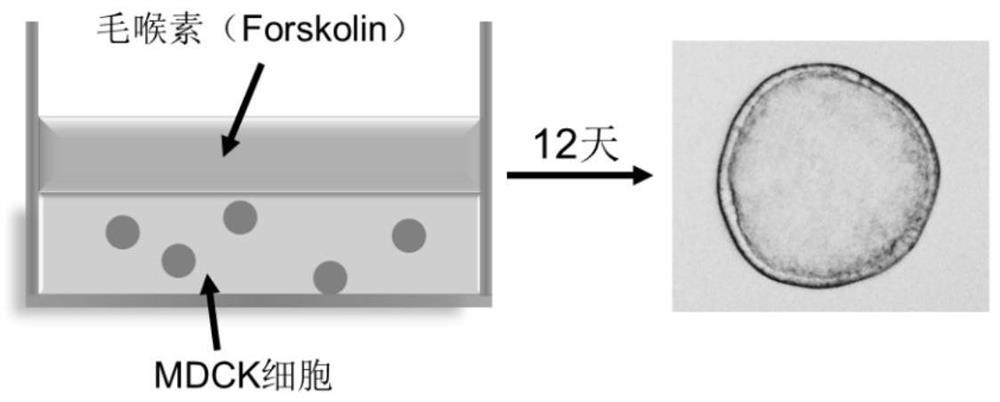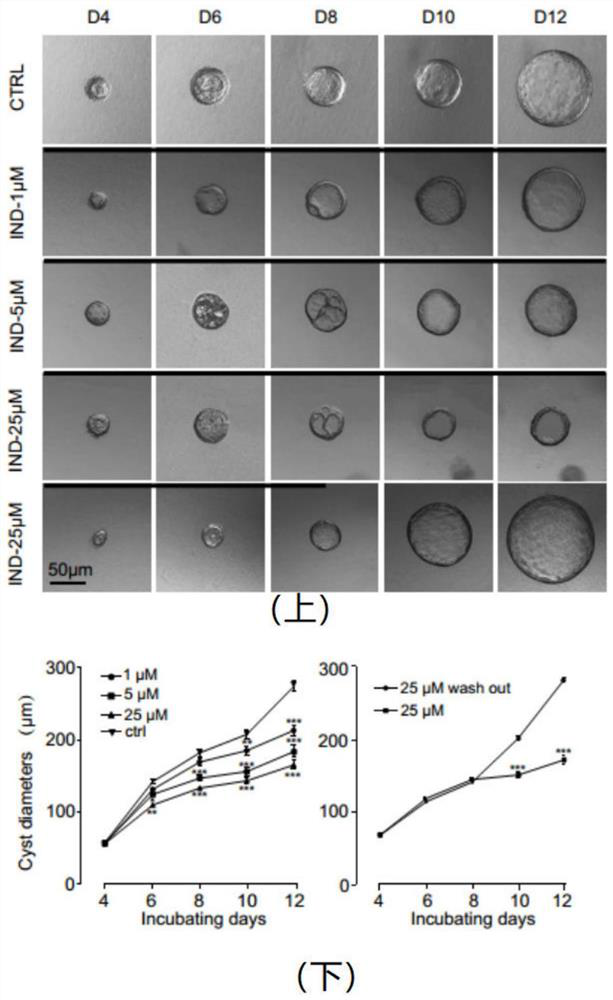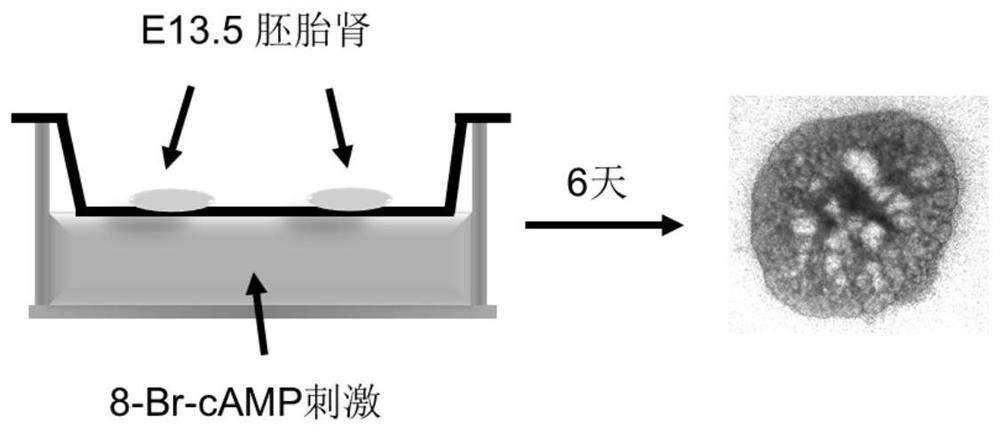Application of 1-indanone in preparation of medicine for treating or preventing autosomal dominant polycystic kidney disease
An autosomal, dominant genetic technology, applied in the direction of drug combination, pharmaceutical formula, urinary system diseases, etc., can solve the problem of ADPKD lack of therapeutic drugs, etc., and achieve the effect of inhibiting the occurrence of vesicles
- Summary
- Abstract
- Description
- Claims
- Application Information
AI Technical Summary
Problems solved by technology
Method used
Image
Examples
Embodiment 11
[0028] Example 1 Inhibition of vesicle growth by 1-indanone
[0029] Canine kidney collecting duct cells (Madin-Darby canine kidney cells, MDCK) were cultured in three-dimensional Matrigel (Purecol Collagen, Inamed Biomaterials Fremont Company, Cat. No. 5409) in vitro.
[0030] Culture solution 1 is the three-dimensional matrigel concentration obtained by adding three-dimensional matrigel, HEPES (4-hydroxyethylpiperazineethanesulfonic acid), penicillin and streptomycin to 10×MEM culture solution, and the concentration of three-dimensional matrigel is 2.9mg / ml, and the concentration of HEPES is 10mM, penicillin concentration of 100U / ml, streptomycin concentration of 100μg / ml culture solution, pH is 7.4.
[0031] Culture solution 2 is a culture solution in which FBS concentration is 10% and forskolin concentration is 10 μM obtained by adding FBS and forskolin (FSK, forskolin, Sigma company, product number F6886) to DMEM / F12 culture solution. DMEM / F12 culture solution It is a li...
Embodiment 2
[0040] Example 2 Inhibition of 1-indanone on the growth of mouse embryonic kidney vesicles
[0041] C57BL / 6 mice over 6 weeks old (Experimental Animal Center, Peking University Health Science Center) were mated with males and females in the same cage at a ratio of 1:1, and observed whether the female mice had vaginal plugs in the morning of the second day. The mice have been pregnant for 0.5 days, and the mice without vaginal plugs are divided into cages first, and then closed in the cages at night, and then observed on the second day; the pregnant female mice continue to be fed alone for 13 days, and on the 13th day, the transwell plates for embryonic kidneys (Corning Co. , Cat. No. 3401) culture.
[0042] The 13.5-day-old mouse embryonic kidney was taken and placed in the upper chamber of the transwell, and DMEM culture solution containing 8-Br-cAMP (Sigma Company, product number B-5386) with a final concentration of 100 μM was added to the lower culture well for cultivation...
Embodiment 3
[0047] Embodiment 3 in vivo experiments
[0048] The mice used were obtained as follows: the Pkd1 flox / flox Mating of mice and Ksp-Cre mice to obtain a generation of Pkd1 + / - ; Ksp-Cre mice, Pkd1 + / - ; Male mice and female mice of Ksp-Cre mice were mated to obtain wild-type mice Pkd1 + / + ; Ksp-Cre and Pkd1 flox / flox ; Ksp-Cre mice (kPKD mice). Among them, Pkd1 flox / flox The genetic backgrounds of mice and Ksp-Cre mice are both C57BL / 6 mice, which are recorded in the literature (Wang W, Li F, Sun Y, et al. Aquaporin-1 retards renal cyst development in polycystic kidney disease by inhibition of Wnt signaling .FASEB J. 2015;29(4):1551-1563.). Pkd1 flox / flox The mice are mice obtained by knocking out the Pkd1 gene specifically for the whole kidney in the background of C57BL / 6 mice, so that the mice will develop rapidly progressive ADPKD after birth, and the mice can survive for about 7 years after birth. ~10 days or so, genetic identification was carried out on the first d...
PUM
 Login to View More
Login to View More Abstract
Description
Claims
Application Information
 Login to View More
Login to View More - R&D Engineer
- R&D Manager
- IP Professional
- Industry Leading Data Capabilities
- Powerful AI technology
- Patent DNA Extraction
Browse by: Latest US Patents, China's latest patents, Technical Efficacy Thesaurus, Application Domain, Technology Topic, Popular Technical Reports.
© 2024 PatSnap. All rights reserved.Legal|Privacy policy|Modern Slavery Act Transparency Statement|Sitemap|About US| Contact US: help@patsnap.com










